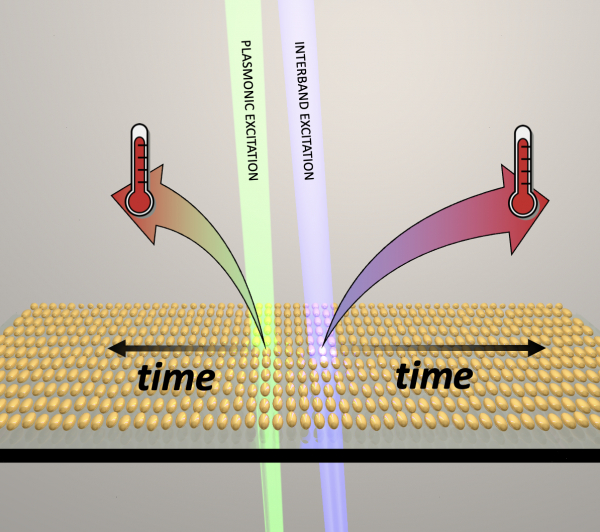High-energy electrons and holes generated upon photoexcitation of plasmonic nanostructures are particularly attractive, as their excess energy can be potentially exploited to drive energetically demanding processes. The study of the ultrafast dynamics of these hot carriers is particularly relevant, as their successful harvesting is strongly affected by their short lifetimes.
In this work, ultrafast transient absorbance measurements have been used to investigate the generation and relaxation of hot carriers following photoexcitation of bidimensional short-range-ordered arrays of gold nanoparticles. Different rise times of the transient signals generated for excitation at the plasmonic resonance or the interband transition have been measured.
To better understand the experimental findings, an empirical method to isolate the contribution of nonthermal electrons to the transient absorbance has been applied, showing that the appearance of the nonthermal electrons takes longer in the case of interband excitation than plasmonic excitation.
These results are discussed in the light of the nature of the two types of excitations considering, in particular, the crucial role of the Auger–Meitner decay of the d-holes following the interband transition: this process appears to "delay" the appearance of energetic electrons to that generated with plasmonic excitation.
Ultrafast Dynamics of Nonthermal Carriers Following Photoexcitation of palsmonic nanostructure
An article on the different dynamics of nonthermal carrier generation in two-dimensional arrays of gold nanoparticles, following their photoexcitation at the plasmon resonance or the interband transition, has been published in ACS Photonics: "Ultrafast Dynamics of Nonthermal Carriers Following Plasmonic and Interband Photoexcitation of 2D Arrays of Gold Nanoparticles."
The publication is the result of a collaboration between the EFSL research group at CNR-ISM and researchers from CNR-SPIN, CNR-IFN, the Università di Genova, and the Politecnico di Milano.
© Copyright 2019 - EFSL ISM CNR







